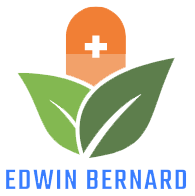If you’re like most people, you’re probably aware of the dangers stroke poses.
But did you know that stroke is the number one cause of death in adults over the age of 60 in the whole world? And that it’s responsible for more than two million deaths worldwide each year?
If you’re at risk for stroke, it’s essential to know the signs and symptoms to take action before it’s too late. In this article, we’ll discuss the signs and symptoms of stroke and how to get treatment if you find yourself in a situation where the stroke is a possible complication.
What is Stroke?
A stroke is a neurological disorder that results in the blockage of blood flow to one or more parts of the brain. This can lead to serious problems with coordination, muscle control, speech, vision, and more.
In most cases, a stroke is caused by a blood clot that forms in an artery and blocks blood flow to the brain. This can happen due to several factors, including high blood pressure, atherosclerosis (hardening of the arteries), smoking, diabetes, and certain types of stroke. It is a severe medical condition that can lead to permanent disabilities or death.
Types of Stroke
These are the most common types of stroke: hemorrhagic, ischemic, and embolic.
Hemorrhagic stroke is caused by a bleed from an artery in the brain. This occurs from damage caused by bleeding in an area of dead tissue within or surrounding one portion (artery wall) of an arterial vessel beneath the skin surface inside your head and neck. In terms of numbers, hemorrhagic strokes may affect 10% percent of the overall stroke cases.
Ischemic stroke is the most common type and is caused by a blockage in an artery that feeds the brain. This type of stroke usually occurs when a blood clot forms in one of the arteries feeding the brain. Ischemic stroke accounts for about 85% percent of all strokes on average. Ischemic strokes typically occur following a thrombotic event, where a blood vessel becomes blocked (also called “thrombi”) and are sometimes deposited in the area of the blockage. Another pattern is the reversible or “partial” type, where blood flow is restricted to only a small part of the brain.
An embolic stroke occurs when an object such as a piece of metal or a piece of wood gets caught in an artery and blocks the flow of blood to the brain. If left untreated, embolic stroke can lead to serious neurological damage and even death. There is no known cure for embolic stroke, but treatments such as thrombolysis (a procedure that breaks up the clot) and stenting (a type of surgery that helps keep the blood vessel open) may help to improve the patient’s prognosis.
All three types of strokes can be fatal if not treated quickly.
If you or someone you know experiences any signs or symptoms of stroke, please seek immediate medical attention. There is no time to waste – a stroke can be fatal within minutes if not treated promptly. Here are steps to do when someone has a stroke:
Steps To Do When Someone Is Having a Stroke
- Remain calm. The most important thing you can do is remain calm and reassuring. Try to keep the person as still as possible and talk to them in a low-key, gentle voice.
- Clear the air. If there are any questions or confusion about what is happening, it is crucial to clear the air before anything else happens. This will help prevent any unnecessary conflicts or injuries.
- Get the person to a hospital as soon as possible. If the person is conscious and can answer questions, ask them to tell you their name, date of birth, and where. Note the person’s symptoms and take a detailed medical history. Do not try to handle the situation on your own – professional help is always the best option. Doctors will be able to provide more detailed instructions on how to care for the stroke victim appropriately.
- Keep them warm. Stroke victims often have low body temperatures, so it’s essential to keep them warm. You can do this by using blankets, coats, or heating pads.
- Remove any obstructions from the airway. Give CPR if needed. If the person is not breathing, give them rescue breaths (6 chest compressions followed by two mouth-to-mouth resuscitation) until help arrives. Clear the lungs of any mucus or blood.
- Begin giving fluids and medications as needed. Provide access to food and drink: if the victim is unable to swallow or speak, it’s important to provide them with food and drink so that they don’t start to consume things that could be harmful to their health.
- Monitor vital signs closely, respond to any changes, and encourage rest. Stroke victims should get plenty of rest to heal properly. This means avoiding strenuous or taxing activities and allowing time for the brain to heal itself.
A stroke is a serious medical emergency and should never be taken lightly. It is a condition that affects millions of people around the world. It can be life-threatening, and new treatments are only available during stroke clinical trials at Power.
By reading this blog, you can learn about the signs and symptoms of a stroke and the various treatments that are available. Getting an accurate diagnosis is important if you want to help. And knowing how to help if you or someone you know is experiencing any of the signs or symptoms described can spell the difference between life and death.

